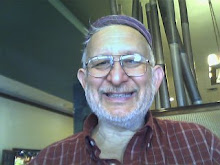
In my previous post, I promised that I would talk about a path to tikkun. First I want to summarize my back-of-the-match-book rationale for Judaism:
Tikkun in Hebrew simply means repair or fixing.
- The problem: We feel broken, we feel that the whole universe is a broken place.
- The solution: Find and do your tikkun, your sacred task that you and you alone can perform in stitching up a rip in the fabric of the universe. It doesn't matter if you start by fixing a rip out there in the world or a rip in your own heart. To repair the one is to repair the other.
- The path or practice to tikkun: The Practice of the Four Worlds
Tikkun in Hebrew simply means repair or fix. It has come to mean far more than that: personal and world salvation, healing, recovery from addiction ... (where am I going with this? Where does this belong?)
Here are the four worlds of the ketubbah - sacred covenanting -
from highest to lowest:
Atzilut - world of divine purpose. For what
purpose has our couplehood come together?
to fix what rip in the fabric of the
universe?
Bri'ah - Steven Covey world of principles and
values, that support the sacred purpose of our couple-dom.
Yetzirah - how am I wired-up emotionally?
What are my emotional strengths and weaknesses? How can the couple
accomodate my yetzer? How can the couple amplify my strengths and convert
my so-called deficiencies into strength. Because, to accomplish
our holy job as a couple, we will need all our energies, both those
embedded in our so-called strengths, and yes, those energies
embedded in our so-called weaknesses.
Ask the same questions of the couple as if it were an autonomous entity.
Asiyyah - this is the world of the traditional ketubbah:
pre-nuptial agreement, divorce umbrella, power,property, money, children ...
How do we want to negotiate all of this, not only so that it works for us as a couple, but also so that it supports us in bringing our couple's tikkun (healing) to the rip in the fabric of the universe that is ours, and only ours, to mend.
For each world, each individual writes up their
individual understanding of that step.
For each step, the two come together and negotiate
their joint understanding of that step.
